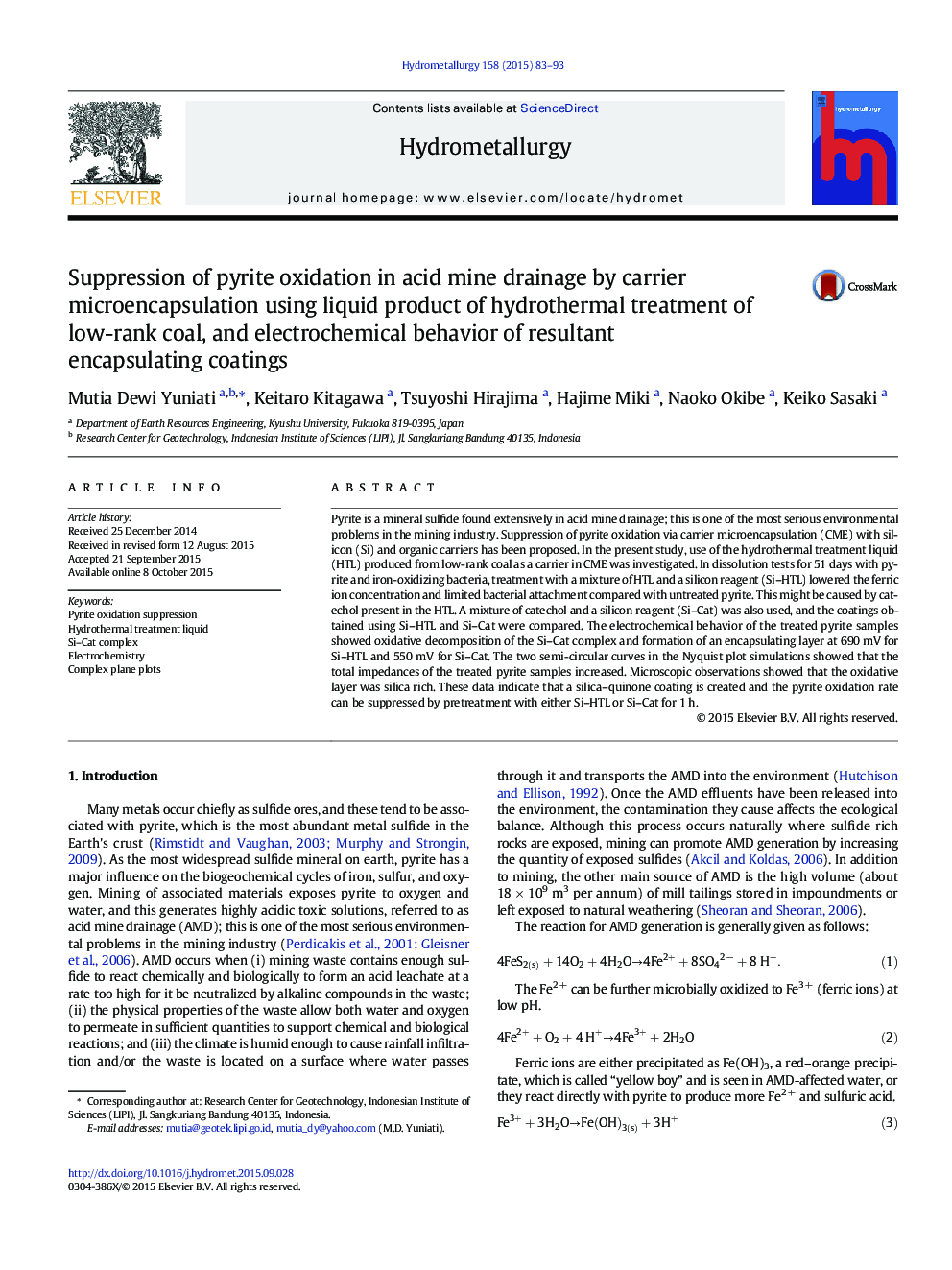| Article ID | Journal | Published Year | Pages | File Type |
|---|---|---|---|---|
| 211974 | Hydrometallurgy | 2015 | 11 Pages |
•CME using HTL from LRC was used to suppress pyrite oxidation.•Si–HTL treatment for 1 h suppressed pyrite oxidation.•Silica–quinone layer covers pyrite surface after Si–HTL or Si–Cat treatment.•Quantitative estimation by EIS confirmed formation of coating layer.
Pyrite is a mineral sulfide found extensively in acid mine drainage; this is one of the most serious environmental problems in the mining industry. Suppression of pyrite oxidation via carrier microencapsulation (CME) with silicon (Si) and organic carriers has been proposed. In the present study, use of the hydrothermal treatment liquid (HTL) produced from low-rank coal as a carrier in CME was investigated. In dissolution tests for 51 days with pyrite and iron-oxidizing bacteria, treatment with a mixture of HTL and a silicon reagent (Si–HTL) lowered the ferric ion concentration and limited bacterial attachment compared with untreated pyrite. This might be caused by catechol present in the HTL. A mixture of catechol and a silicon reagent (Si–Cat) was also used, and the coatings obtained using Si–HTL and Si–Cat were compared. The electrochemical behavior of the treated pyrite samples showed oxidative decomposition of the Si–Cat complex and formation of an encapsulating layer at 690 mV for Si–HTL and 550 mV for Si–Cat. The two semi-circular curves in the Nyquist plot simulations showed that the total impedances of the treated pyrite samples increased. Microscopic observations showed that the oxidative layer was silica rich. These data indicate that a silica–quinone coating is created and the pyrite oxidation rate can be suppressed by pretreatment with either Si–HTL or Si–Cat for 1 h.
